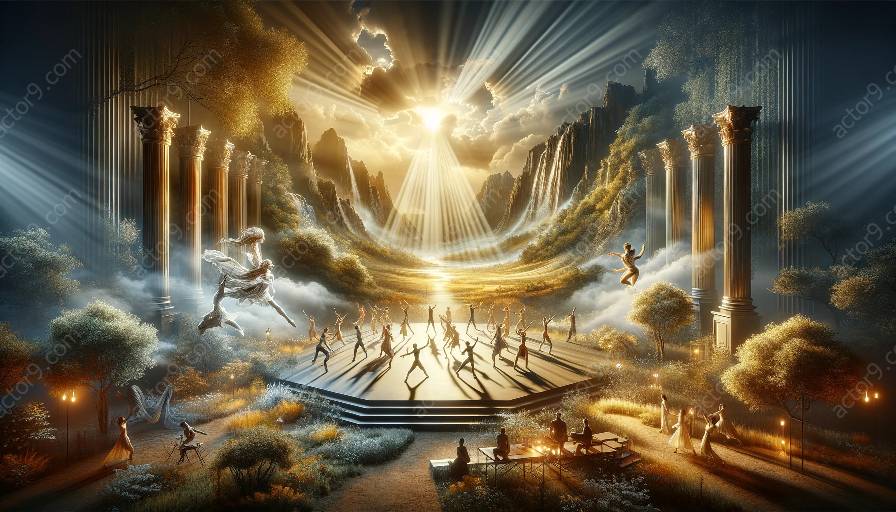Physical theatre, with its emphasis on movement and expression, offers a unique platform to integrate lighting, sound, and music to create captivating performances. Through the strategic use of lighting design and synchronization with sound and music, the physical theatre experience can be magnified, evoking emotions and enhancing storytelling. This article will explore the role of lighting in physical theatre, its impact, and the creative possibilities of integrating lighting, sound, and music.
The Role of Lighting in Physical Theatre
Lighting serves as a crucial element in physical theatre, shaping the atmosphere, guiding audience focus, and highlighting movement. In physical theatre, where movement and expression play a central role, lighting can accentuate the dynamics of performers' movements, adding depth and dimension to the visual storytelling. Moreover, lighting can create symbolic and metaphorical representations, enhancing the thematic elements of the performance.
Impact of Lighting in Physical Theatre
The impact of lighting on physical theatre is profound, influencing the audience's perception and emotional engagement. Effective lighting design can create an immersive environment, drawing the audience into the narrative and intensifying the overall experience. By manipulating light intensity, color, and direction, the mood and tone of a physical theatre performance can be significantly enhanced, imbuing scenes with intensity, drama, or subtle nuances.
Integrating Lighting with Sound and Music
When lighting is integrated with sound and music, the physical theatre experience gains a multi-sensory dimension, elevating the audience's engagement. By synchronizing lighting changes with musical crescendos or dramatic sound effects, the synergy of visual and auditory stimuli produces a dynamic and compelling fusion. This integration can intensify key moments, create seamless transitions, and convey emotions with heightened impact, enriching the overall narrative.
Enhancing Emotional Resonance
The integration of lighting, sound, and music in physical theatre amplifies emotional resonance. Through careful coordination, lighting can mirror the rhythm and energy of the performers, enriching the emotional landscape of the performance. Complemented by evocative soundscapes and musical scores, the sensory amalgamation deepens the audience's emotional connection, eliciting profound emotional responses and immersive engagement.
Creative Possibilities
The integration of lighting with sound and music offers limitless creative possibilities for physical theatre. From creating surreal and dreamlike atmospheres to punctuating powerful scenes with dramatic lighting cues, the harmonious interplay captivates and enthralls audiences. Furthermore, the use of innovative technologies, such as interactive lighting systems and synchronized audio-visual effects, opens new frontiers for experimental and boundary-pushing performances.
Conclusion
In conclusion, the integration of lighting with sound and music enriches the physical theatre experience, offering a canvas for multi-sensory storytelling and emotional resonance. The role of lighting in physical theatre is pivotal, influencing the narrative, mood, and audience engagement. By exploring and embracing the synergistic potential of lighting, sound, and music, physical theatre can transcend traditional boundaries, delivering compelling and unforgettable experiences for audiences worldwide.




































